This morning we took the bus to Sintra and Cascais and on the way our local guide talked about life in Portugal.
There are three types of health care for the public in Portugal. The first is the National Health Services. It’s designed to serve all people who contribute to the social security system. This is funded through general taxation, as well as social security contributions. The second type is known as the health subsystem program. It provides health insurance coverage to members of certain professions and organizations. Some of the most prominent groups covered under this stream include the police, the military, banking services, and public servants. The third type of care is voluntary private health insurance. While not as popular as it is in other countries, private medical insurance still plays an important role in Portuguese society.
For the most part, the first six months of your salary out of the year goes towards the taxes for the socialized medicine and for education. But in actuality, the year is really 14 months and not 12 months since you are paid a vacation month bonus as well as a Christmas month bonus.
Education is free for elementary and college but you can pay to attend the better private schools if you have the grades.
With health care, if it is an emergency or a serious illness, you are seen right away, but if it is elected surgery or just because you want to see a doctor, you have you wait.
We drove to Sintra, a town Lord Byron called “the most beautiful in the world”. We began at the Royal Palace, which dates back to the Middle Ages. It was the residence of the Islamic Moorish rulers of the region. Nothing built during Moorish rule or during the reign of the first Portuguese kings survived. What they think is the earliest surviving part of the palace is the Royal Chapel, possibly built in the 14th century. The chapel was under renovation when we were there, but we were able to see the ceiling with the doves of peace painted in squares to resemble tile work.
We toured the many rooms, and two of interest were what looked like bedrooms. There was a huge bed in the room called a state bed. These beds were used for major “events” such as marriage, birth and death. These events were deemed so important, that witnesses would have to be present and would stand around the bed while the event took place.
We saw the Swan Room because of all the painted swans on the ceiling, which was the symbol of the house of the groom. There was also the Magpie Room with magpies painted all over the ceiling with the emblem “por bem” (for honor) in their beaks. Our guide said that King John I was caught kissing a lady while he waited for his queen. The gossip of the kiss spread throughout the palace by the ladies of the court. To put a stop to the gossip, the king decorated the ceiling with as many magpies as there were women in the court.
The rooms were elegant as were the furnishings, and we had to climb many curved staircases to get to the top rooms. The view was beautiful though as it overlooked all of the rooftops and we could see the ruins of a Moorish castle in the distance.
We got did some shopping, enjoyed a pastel de nata and some Portuguese coffee, and then it was back on the bus. Since is was Halloween, I gave out Hershey candy bars to everyone. The local guide and the bus driver really enjoyed them.
We then drove to Cascais, a beautiful seaside town along the Atlantic ocean. It is known for tourism as well as for hosting many international events for surfing and sailing. The town has many restaurants and we stopped in one for a bowl of soup. Then we went across the street to Santini’s which is supposed to serve the best gelato in Portugal. We weren’t impressed.
The Farewell Dinner took place tonight, and before hand, we sampled some porto wine and our guide thanked us for coming to his country. We walked to the restaurant for the dinner and said goodbye to all the travelers. Tomorrow we are up at 5 to make our flight back to the states.
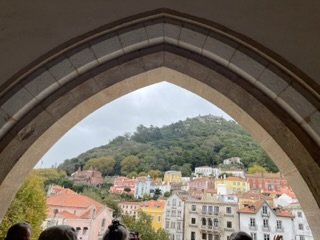
View from the Royal Palace entrance way

The swan ceiling
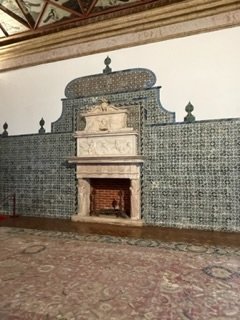
Tiles
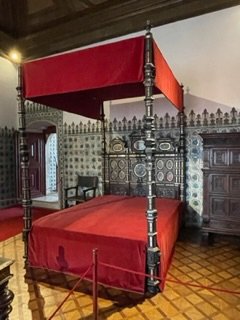
State bed
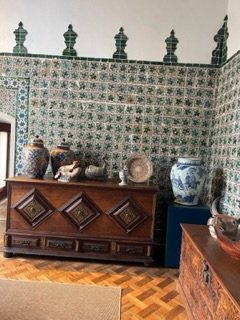
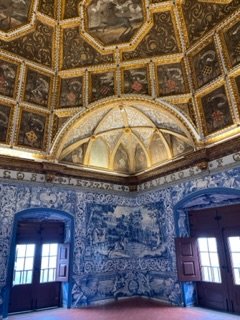
Heraldic Hall with the coat of arms of Portuguese royalty and tile work showing scenes of the 18th century

Optical illusion tile work
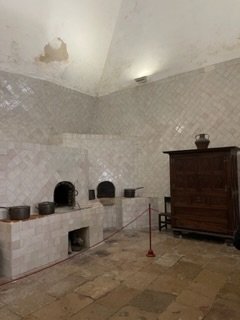
The kitchen that Queen Maria Pia updated
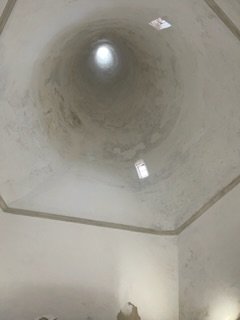
The oven vents up through the ceiling

Crystal chandelier in the palace
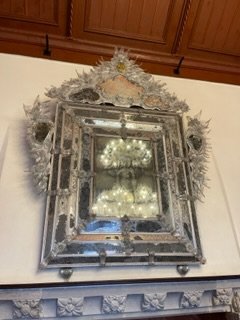
Intricately embellished mirror
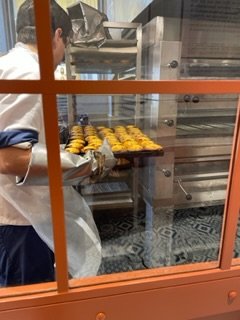
Baking the pastel de nata…
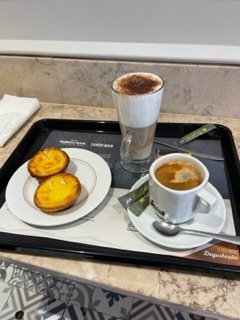
….And enjoying them warm from the oven

The beach at Cascais

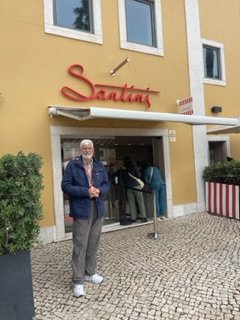
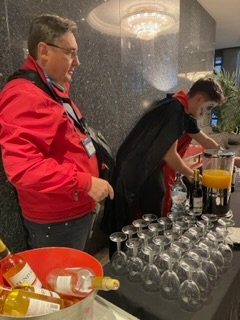
Preparing for the Porto wine tasting.
